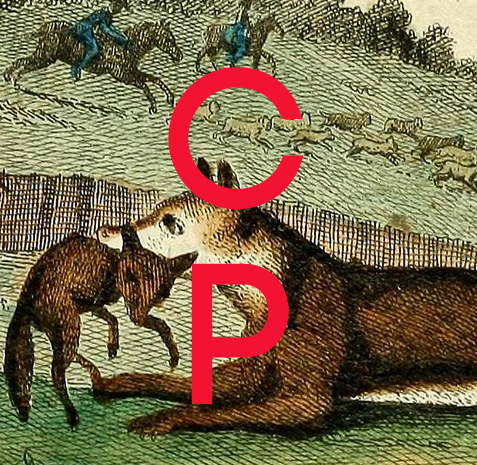2015 MICRO-FICTION CONTEST — JUDGE'S STATEMENT & FINALISTS
/Phillip Sterling
October 2015
For me, a successful work of flash fiction must integrate three C’s of narrative impulse: character, conflict, and conciseness. Characterization, of course, is the foundation upon which a story’s make-up is applied; with flash fiction in particular characters must be immediately recognizable and convincing (in the sense that their conflicts and resolutions stem from their circumstances). It is in this regard alone that I can distinguish flash fiction from prose poetry: while a poem may have a narrative context, its primary intent is meditative or reflective, more the nuance of an emotional or intellectual moment than of story, more language than luggage. In a poem, a character may be presented; in fiction, a character develops. And in the process of development something happens. Call it what you will—conflict, complication, rising action, plot—the narrative evolves from a unique character’s personality and circumstances (which, for a reader to be convinced, must be clear).
A successful fiction, then, is a unity of characterization and circumstance that is unique to that narrative. In addition, a successful “flash” fiction requires that uniqueness to be fully articulated in its smallest form; it demands conciseness. The make-up must be applied so sparingly as to appear not to exist at all, a process more often associated with poetry than prose (and may be one reason for the on-going micro-fiction/prose poem dialectic). Rather than selecting what narrative details are to be included, the writer of flash fiction selects what must be left out. Thus, in a successful—or effective, or good—work of very short fiction, what is left out—what is implied or understood—is vital to the integrity of the whole. It is not information or detail withheld from the reader in order to execute a kind of statement or climax—as is often the case of a “punch line” story (where we learn in the final sentence that the narrator is a dog, for instance). Instead, it is a kind of negative space that—like a sculpture by Henri Moore—serves to define the body of the story (upon which the make-up can then be applied).
There is a fourth C, to be sure: Comic. The conciseness and density, the speed with which we read a piece of flash, lends itself to humor. Like a good riddle or joke. But subtly: more in the way of a pun than of slapstick. More epiphany than guffaw.
That being said...
First Place: “Shawl Pattern” by Melanie Dunbar
A small gem (emphasis on small) in the starry, metaphoric sense that its conciseness is brilliant. Characterization captured in one or two sentences; the tension between what’s [thoughtlessly] spoken and what’s [thoughtfully] not; the conciliatory relationship implied in the resolution (that it is tenuous and momentary). This story is remarkable in its understatement and subtlety.
Second Place: “Anna Karina Floats in the Ocean” by David Joseph
What might have become just another story about the fatalistic and reckless decision-making of youth—another metaphoric take on being left “afloat” or “cast to sea”—is redeemed by the depths (sorry) and breadth of characterization, rendered in uniquely sensory detail.
Third Place: “Arch Made of Codfish” by Linda Nemec Foster
Playful and funny, in the manner of Russell Edson—a fabulist look at domesticity, in a dense and pun-ful manner, with its blatantly fictive (“Don’t-take-me-serious!”) and ironic tone.
Honorable Mentions (in no judgmental order):
“Saturday Night” by Bernard Grant
I like the nudge of this piece—its Carver-like minimalism and use of dialogue. While there seems to be a tendency in recent short fiction to try and capture the big conflicts—the drama of death, disaster, destruction, dystopia (in 500 words or less)—here is a small domestic moment of huge significance and understanding, the moment a character discovers and defines himself in his relationship to the world.
“The Before” by Amanda Chiado
To describe people we love in terms of their “natures”—their predilections and obsessions—is to define ourselves. We become the resolution of their antithesis—something that is often over-dramatized when it comes to stories about family. But here is a new way of reconciling the dichotomy—through sensory language with a unique perspective.
“Oology” by Elodie Olson-Coons
The title alone works the mouth, the tongue . . . the poetry of this story (language, again) becomes a character in its own right, taking shape from the details of the oologist’s obsession and pathos. The densest in terms of involving the reader in poetic experience (tastes, smells, sights, textures), it is the most understated in terms of narrative sequence and cause. For that reason alone—it’s uniqueness—I’m attracted to it, and wish to share it with others.
NOTE: While observers may argue a certain watery theme among all six selections, I would contend that it is more reflective of the selections overall than of any thematic preference on my part; if I lean, it is toward the use of sensory (poetic) language, which, in the greater group, emerged from characters in affinity with oceans, ponds, lakes, rivers, puddles, rain, snow . . . or [politically] the profound absence of...



